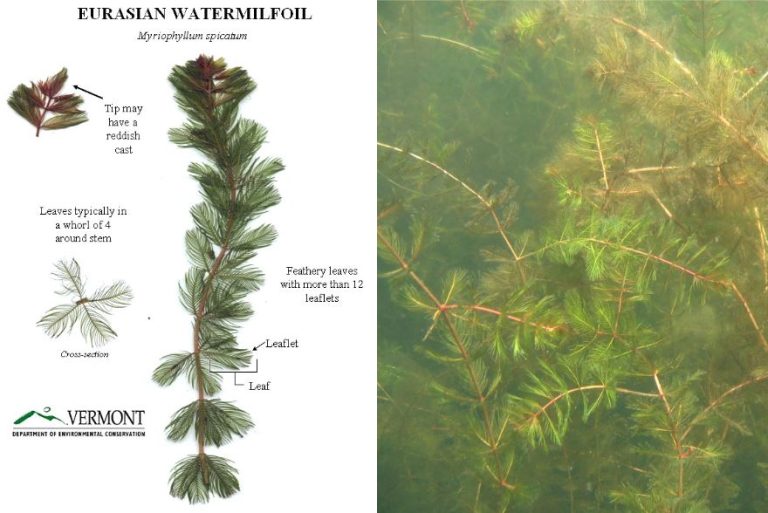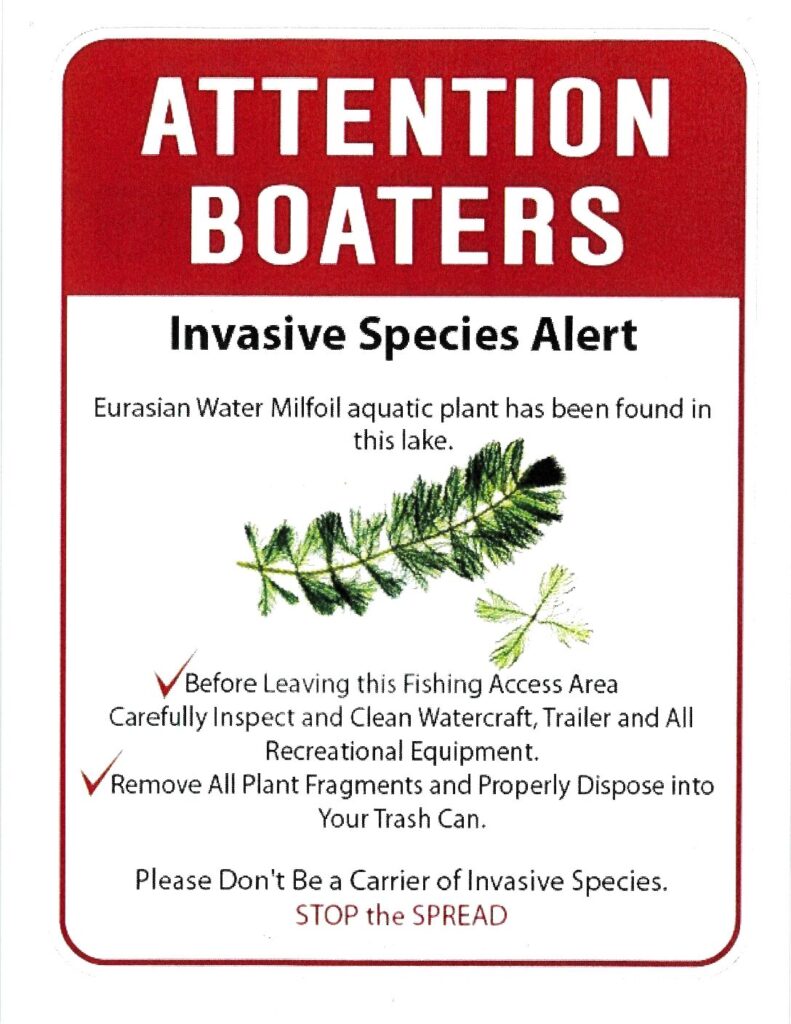PLANT ID-ING TIPS
AQUATIC INVASIVE SPECIES
Milfoil – Common names: Eurasian watermilfoil, spiked watermilfoil, EWM. Milfoil is a submerged aquatic plant which grows in still or slow-moving water. It is native to Europe, Asia, and North Africa, but has a wide geographic and climatic distribution among some 57 countries, extending from northern Canada to South Africa. It has been found in 33 states in the US. It is considered to be a highly invasive species.

Eurasian Watermilfoil is nothing more than a weed, native to Europe and Asia. It’s interesting to note that Milfoil was used to decorate aquariums, but now, it’s mostly seen in lakes. Like weeds in our yards or gardens, it’s something that can harm other plants as well as put our lakes in danger. The long stems become easily tangled and form thick mats, making it hard for recreational lake users to enjoy the water by engaging in simple pleasures like boating, fishing, and swimming. Eurasian watermilfoil crowds out native plants and forms thick, floating mats on the surface of the water that can make boating, fishing and swimming difficult. with smooth stems that branch near the water surface.
This dangerous plant also makes water life hard for other healthy and necessary aquatic plants by pushing them out of the way. It’s easy for Eurasian Watermilfoil to reproduce, and it only takes one strand of the weed to create more of the tangled stems. All it takes is one piece hanging on a fisherman’s boat to move the weed from place to place, creating even more of the weed and making weed takeover imminent.
Milfoil also brings dangerous mosquitoes to bodies of water, and since it is harmful to good aquatic plants, any body of water where Milfoil grows may become less and less diverse as time goes on and the powerful plant damages all of the good lake life in its path.
Eurasian watermilfoil has slender stems up to 8.2 ft long. Submerged leaves are borne in pinnate whorls of four, with numerous thread-like leaflets.
The DNR district biologist overseeing Lakes Shafer and Freeman is available for plant identification and asks that plants be photographed on a light background and that pictures be sent to D1Fish@dnr.in.gov.
What You Can Do To Help Stop The Spread Of Milfoil
Here are the things YOU CAN DO to help stop the spread of milfoil, which are all applicable lake-wide. All require a bit of elbow grease on your part, but if we are all contributing, it can make a big difference around the lake.
- As a general rule, get as much milfoil out of the lake as possible. Let it dry out on land and dispose of it as you would yard waste.
- PLEASE don’t drive through milfoil patches with your boat which will create fragments. Fragments can easily seed new plants.
- If you do have milfoil on your prop, don’t just reverse and drive away, please remove it from the lake.
- If you have milfoil growing in your dock or swimming area, pull it out by the roots and remove it from the lake.
- If you see milfoil floating anywhere in the lake, near your dock, or along your shoreline, remove it from the lake.
- Obey boating regulations by travelling at no-wake, 5 MPH speeds within marked areas.

DNR AQUATIC VEGETATION CONTROL PERMIT EXEMPTION
Potential Companies that treat Invasive Aquatic Vegetation:





